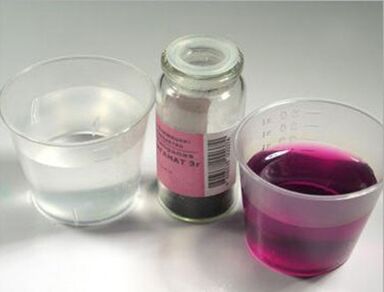The problem of fungal nail infections is very common today. Highly advanced multiplication of the fungus in the thickness of the nail plate and in the soft tissue surrounding the nail is fraught with complete loss of the nail without even the possibility of partial recovery. That's why if you suddenly notice a change in their structure or color from your normal nail type, be sure to contact a specialist for treatment. They will help to determine the presence of fungal infection and, if necessary, to distinguish it from nail bruises, manifestations of systemic diseases of the body.
Causes of Toenail Fungus

Observance of the usual hygiene rules and awareness of infection are the basis for the prevention of fungal infections. Failure to observe these vital aspects can lead to disease. Most of the time, the fungus gets on the skin and nail plates when you wear other people's shoes, perform bathing procedures in public places (eg bathrooms, swimming pools, saunas), wash your feet little or not at all, do not interact with long-termFull of nail fights and rough skin cracks on the soles.
It is also possible to get a fungal infection if pedicure tools are not in good condition and sanitized, though this is fraught with infections and more dangerous ones like hepatitis B and C.
All these reasons lead to the fact that fungal microbes most easily populate previously healthy tissue, creating the most favorable conditions for this, and you only exacerbate the situation.
What does onychomycosis look like?
The signs of toenail fungus don't appear at the same time. Skin fissures of various sizes and depths can be observed in the interphalangeal region before apparent changes to the deck on the affected toe in the region of the periungual soft tissue structure. Add this itching and tingling sensation to the affected area. These symptoms vary in severity and the skin may start to peel and turn red. The main sign of a fungal infection is changes in the nail plate. It can become thicker or thinner, and changes in the usual color of the nails are also characteristic: white, light yellow, dark yellow, brown, light green, color combinations. The edges of the nail are no longer flat, and in advanced cases, the nail gradually loses its structure, breaks, crumbles. Eventually, delamination of the entire board may occur.
Watch your friends carefully, especially those who are older, and you will likely be able to easily recognize the symptoms of onychomycosis.
How can you tell a bruised nail from a fungus?
First, the nail bruise is directly related to the fact that the toe was injured recently. The external manifestations of bruising do not appear immediately, but after 2-3 hours. Before that, the finger is swollen and may turn red. In addition, blood pooling under the nail plate (due to its draining from damaged blood vessels in the nail bed) becomes visible to the naked eye. Its star cluster initially appears pinkish-scarlet, and over time it turns deep red, deep purple and even black. At the same time, the hematoma gets smaller and may look like a spot at the end of the healing process. The soft tissues of the fingers remain swollen, and bruising may also form on them. The severity of symptoms depends on the force causing the finger and deck injury.
Therefore, the symptoms and behavior of the patient prior to its appearance, which is characteristic of a picture of a nail bruise, differ fundamentally from the clinical picture of a fungal nail infection. The mechanism of development of these diseases is also evident: they are infected by fungi, further damage to the nails is closely related to the activity of microorganisms, bruises are the result of injuries, hematomas are due to damage to blood vessels of the fingers, no microorganisms are involved in the pathogenesis. Also, nail fungus is treated by dermatologists or dermatologists, while bruises are closer to the activities of traumatologists and surgeons.
Potassium permanganate method for checking fungal infection

This quick and easy fungal diagnosis can be done at home. The main substance to be determined is potassium permanganate (potassium permanganate), which is lavender when diluted with pure water. Next, you have to soak your feet in colored water for a few minutes. If you do have fungus on your nails, potassium permanganate will not stain the affected areas (they will turn white). Healthy parts of the nail plate will turn brown. So you can easily diagnose the disease.
Don't forget to sanitize your nails with hydrogen peroxide after this experiment. It is important to contact a specialist if you find out that the diagnosis is positive. Now you know how to spot onychomycosis at home without breaking a sweat.
A hospital diagnosis of nail fungus certainly includes other, more accurate laboratory methods to pinpoint the source of the problem.
We treat fungus on the nails with medicine

As you know, many people prefer attempts at folk remedies for any ailment to doctors' modern drug treatments. In some cases, nail fungus may be treatable with folk remedies, but this has no evidence base. That is why the main advice if you have a fungal nail infection is to adhere to the medical prescription and insist on treatment with pharmaceutical preparations.
Depending on the degree of development of the disease, the form of the drug is chosen. Fundamentally, they are divided into means of local (local) and general action. These medicines contain antifungal agents - a special group of pharmacological substances.
In the first stages of fungal infection, it is better to use topical medicines (ointments, creams, gels). If the fungus has already been able to enter the systemic circulation, which is the most serious result, or the nail plate is affected to a large extent, the treatment is supplemented with general preparations (tablets or infusion solutions).
List of antifungal drugs used to treat fungal toenail infections includes: levorin, nystatin, fluconazole, ketoconazole, miconazole, amphotericin B, griseofulvin, itraconazole, terbinaFern. These are the names of the active substances that form the basis of the treatment. These funds can be part of various medicines. That is, the drugs at the end are just the trade names of those substances listed first. In order not to misuse medications, forms and dosages, it is important to consult a specialist and follow their treatment recommendations.
The most common treatments include:
- soda bath
- iodine treatment
- vinegar or vinegar essence therapy
- Treat Fungus With Laundry Soap
Folk methods are only effective in the early stages, plus drugs.
Prevent fungal nail infections

You don't need to follow any special rules to protect yourself from fungal microbes, and they're simple if you introduce them into your daily life. First, refuse to walk in someone else's shoes, even in what you consider the most innocuous situation. Also be sure to use separate slippers and slates in the bathroom, sauna, swimming pool.
Take care of your feet regularly, washing away germs thoroughly with soap and drying your skin. Try to avoid shoes that make your feet sweat. Watch for cracks in the skin of the feet, especially near the nail plate and between the toes. Change socks daily and when soiled. If sweaty feet is a not-so-pleasant habit for you, then we recommend that you take an interest in special baths, they can really help you.
Fungal infection is a common disease among the population of the country today. Many people don't even realize it's there, perhaps referring to a chafed nail or a symptom of everyday pollution. However, as you have already seen, this fungus causes a very typical clinical picture. You only need to carefully observe the condition of your feet and seek medical treatment in time, but it is best to do a good job of infection prevention.
















